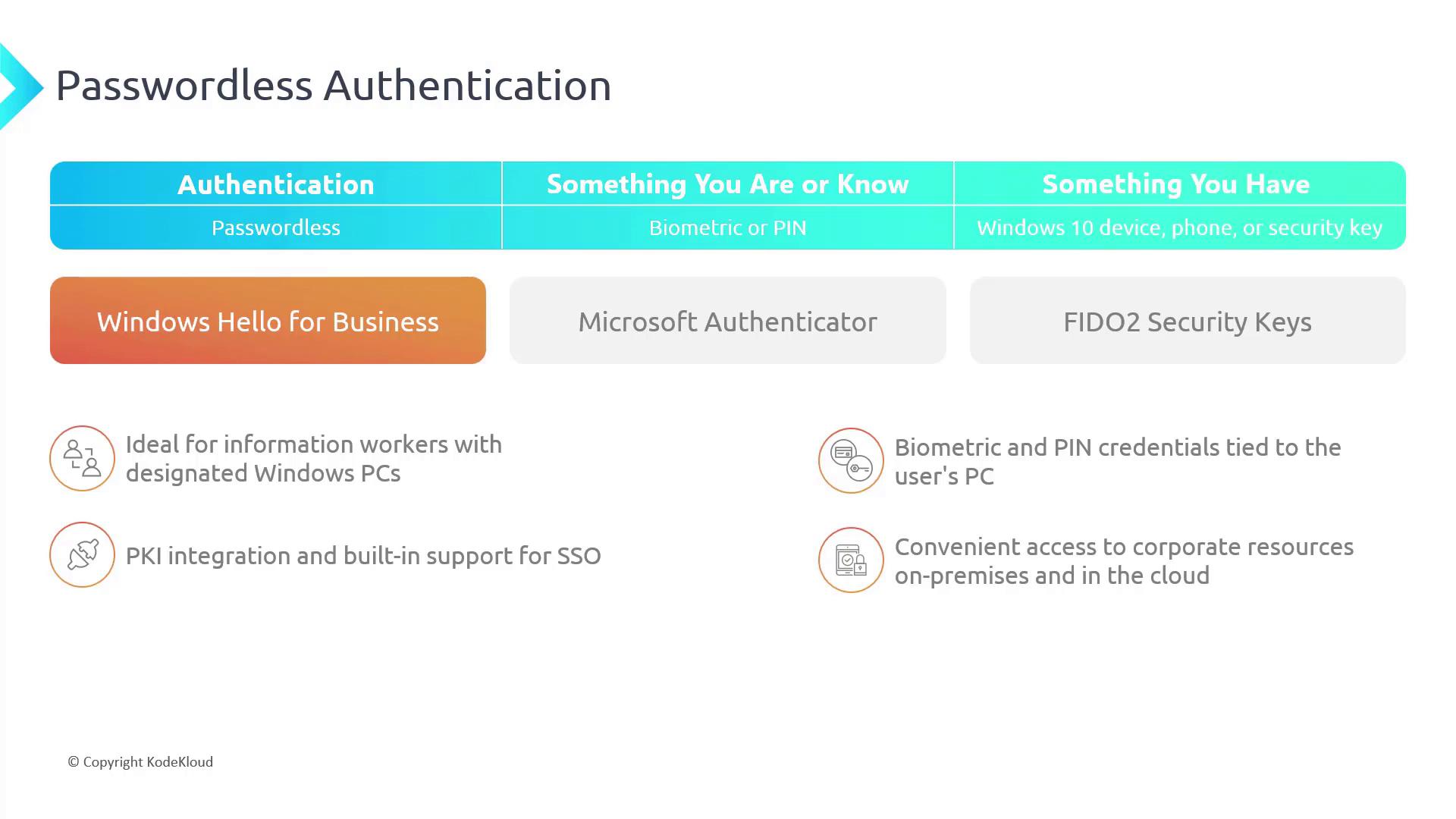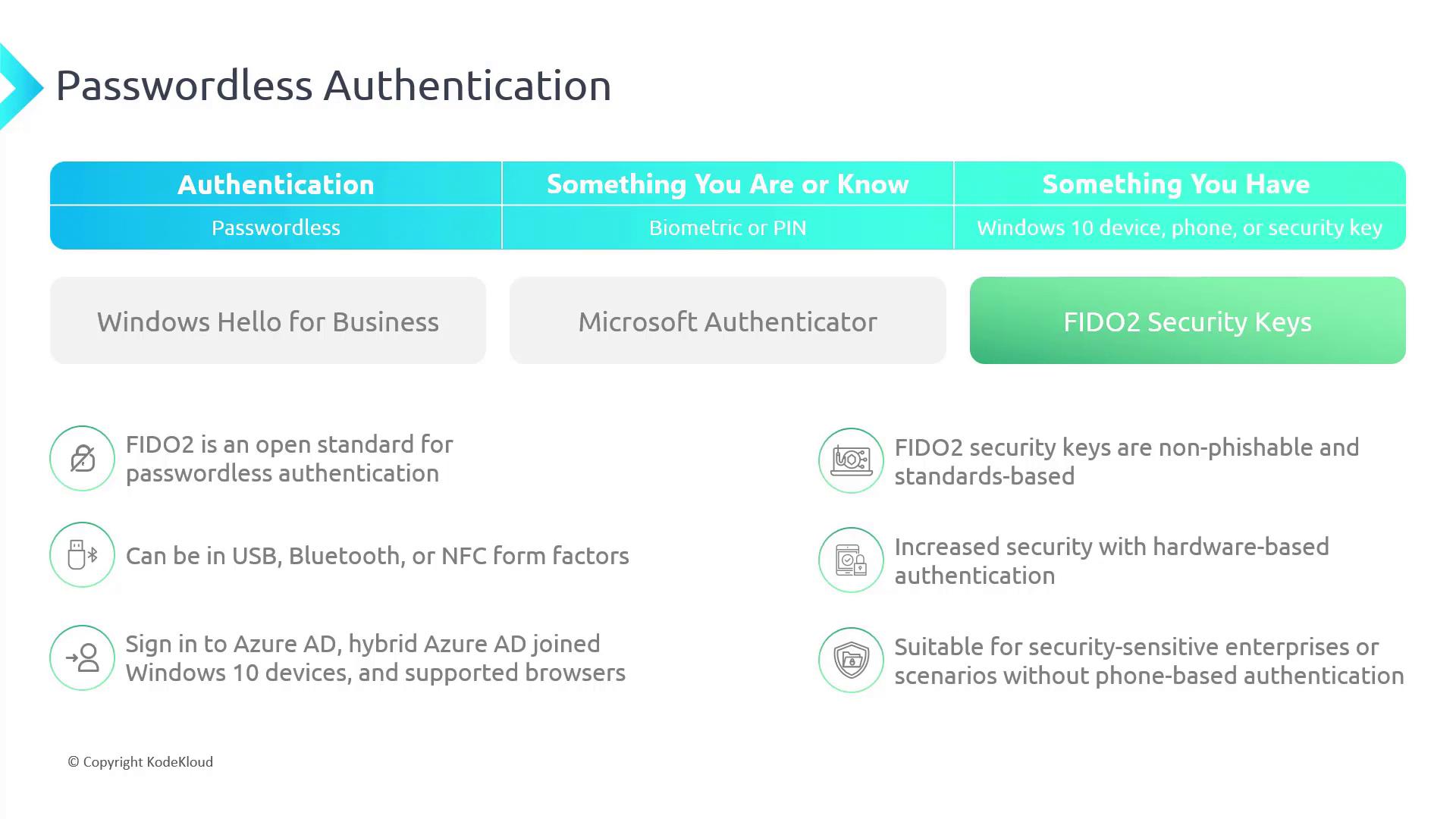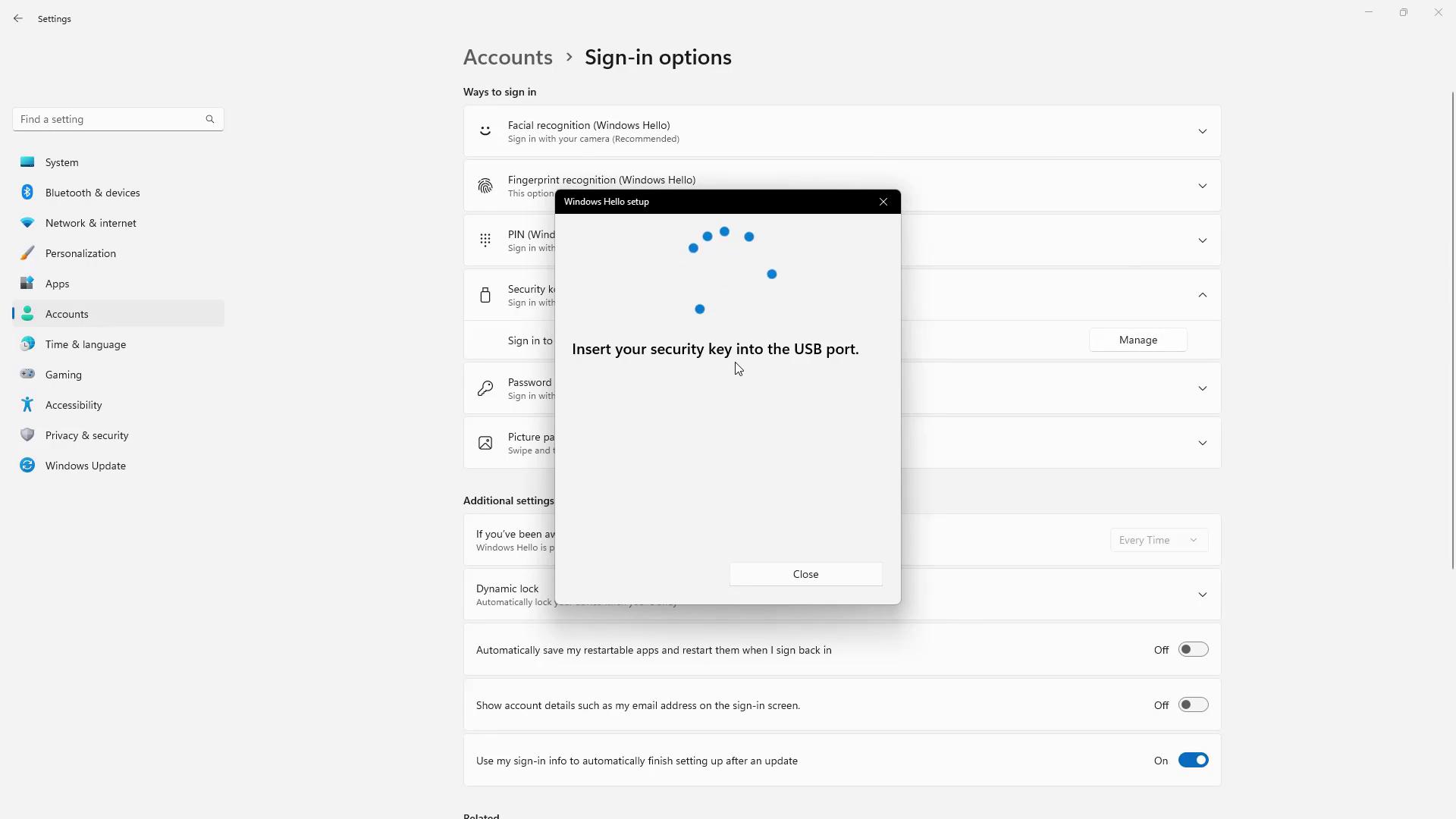Microsoft Azure Security Technologies (AZ-500)
Secure Azure solution with Azure Active Directory
Implement Passwordless Authentication
Welcome back. In this article, we will explore how to implement passwordless authentication in Azure Active Directory (Azure AD). This modern approach eliminates the reliance on traditional passwords, enhancing security and providing a more convenient user experience by leveraging alternative verification methods.
There are two main categories of authentication factors:
- Something you are or know (such as biometrics or a PIN).
- Something you have (like a Windows 10 device, phone, or security key).
Below, we delve into the various methods available in Azure AD for passwordless authentication.
Windows Hello for Business
Windows Hello for Business is an excellent solution for enterprise scenarios, especially for information workers using designated Windows PCs. Even users with personal Windows devices can take advantage of this feature. Depending on your device hardware, you can use biometric authentication such as fingerprint or facial recognition or simply set up a PIN if biometric hardware is unavailable.
Key benefits of Windows Hello for Business include:
- Use of biometric and PIN credentials tied specifically to the user’s PC.
- Support for Public Key Infrastructure (PKI) integration.
- Built-in single sign-on for seamless access to both corporate resources and on-premises or cloud services.

Microsoft Authenticator
The Microsoft Authenticator app transforms your smartphone into a secure authentication device. Once you add your account by scanning a QR code, the app supports various authentication workflows, including:
- Displaying a time-sensitive code that refreshes every 30 seconds.
- Sending a push notification that allows you to approve the sign-in quickly.
Using the phone for authentication provides convenience and security, as long as the device is protected by a robust lock mechanism.

Note
It is important to secure your phone with proper protection to prevent unauthorized access when using it for authentication.
FIDO2 Security Keys
FIDO2 is an open standard that enables hardware-based, passwordless authentication. FIDO2 security keys are designed to be non-phishable and are available in a variety of form factors, including:
- USB
- NFC (Near Field Communication)
- Bluetooth
These keys significantly boost security by requiring you to have the physical key in hand during the authentication process. FIDO2 keys are compatible with Azure AD, Hybrid Azure AD, Windows 10 devices, and supported browsers, making them an excellent choice for environments where phone-based authentication may not be suitable.

Configuring Passwordless Options on Windows
To configure passwordless options on your Windows device, follow these steps:
- Open the Settings app.
- Navigate to Accounts > Sign-in options.
In the Sign-in options menu, you will see the available methods to sign in:
- Facial recognition (if your device supports it)
- Fingerprint recognition (if your hardware supports it)
- PIN (often pre-configured)
- Security key
For example, to set up a security key, click on Manage under the security key option. This action will prompt you to insert your USB security key into the computer. If your device offers facial recognition, additional options for Windows Hello will be visible.

Warning
If you do not have a USB security key available during testing, you will be unable to complete the process. However, the interface clearly displays all available sign-in options.
Conclusion
In this article, we examined the primary methods for implementing passwordless authentication in Azure AD, including:
- Windows Hello for Business
- Microsoft Authenticator
- FIDO2 Security Keys
Each method has unique advantages that collectively offer a secure and user-friendly experience, moving away from traditional password-based systems. With these insights, you can now select the most appropriate passwordless authentication method to meet your organization’s security requirements and user preferences.
For further details and best practices, refer to the Azure Active Directory documentation.
Watch Video
Watch video content